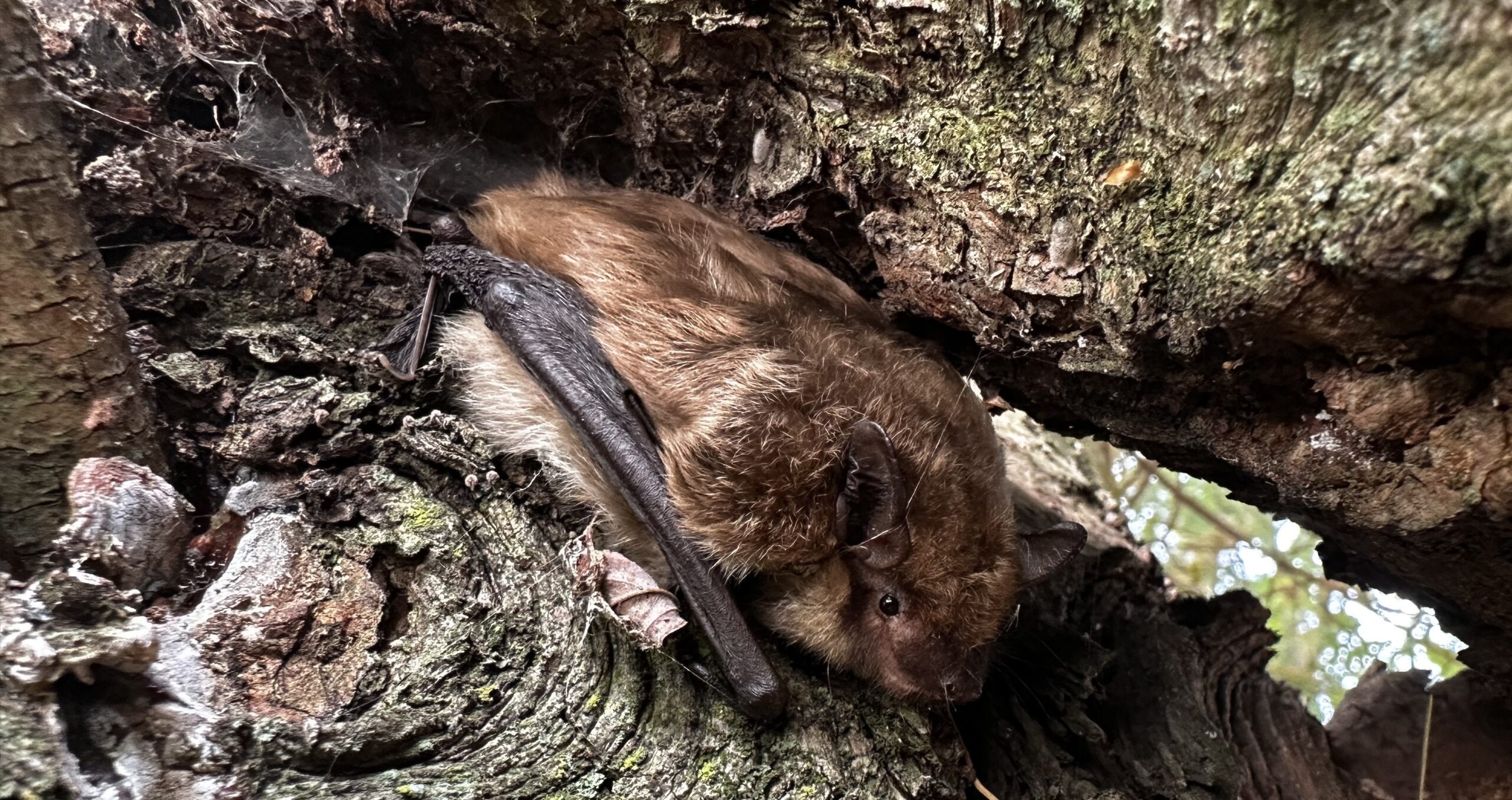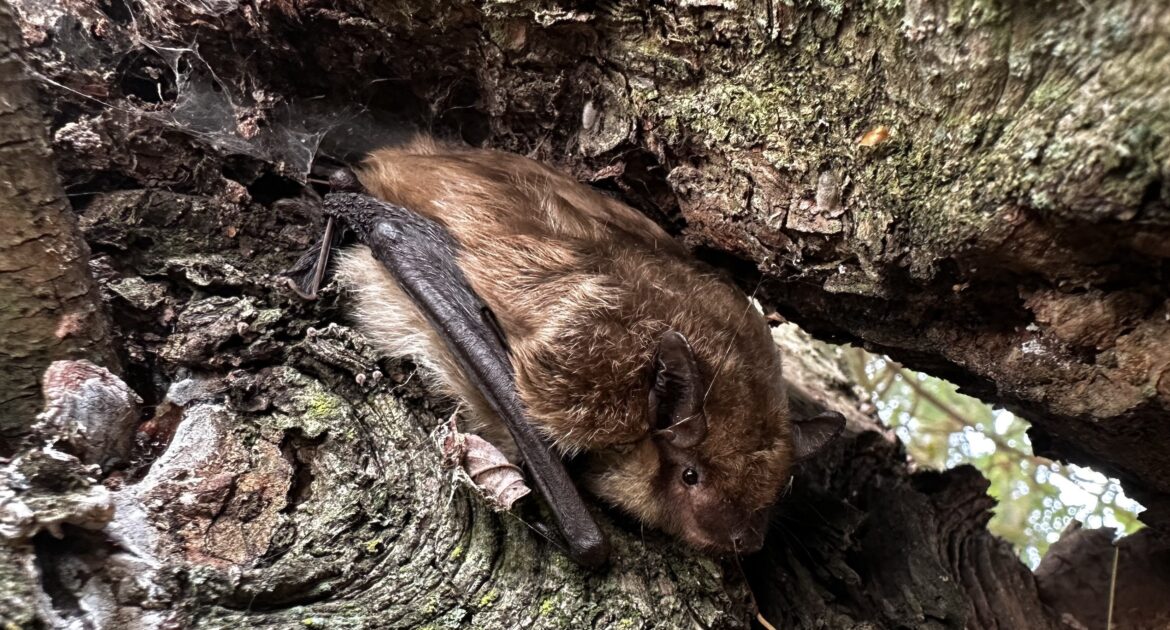If you’ve ever spotted bats flying through the evening skies of Minneapolis, you’ve probably marveled at their speed and agility. These fascinating animals have a secret weapon that helps them thrive in the dark – echolocation. This remarkable tool allows them to move through the night with precision, navigating obstacles and hunting insects with ease. But how does bat echolocation really work?
Bats rely on echolocation to “see” in the dark by emitting high-pitched sound waves, which bounce off objects and return as echoes. By listening to these echoes, bats can create a mental map of their surroundings, identifying the location, size, and even the texture of objects.
For homeowners in Minneapolis, understanding how bats use echolocation is more than just a fun fact; it’s critical when considering humane bat removal.
Skedaddle Humane Wildlife Control offers expert bat removal services in Minneapolis, using methods designed to respect and preserve the natural behaviors of these incredible creatures. In this article, we’ll explore the unique techniques we employ and how they protect both bats and your home, ensuring a safe and humane solution.
The Science Behind Echolocation
At the core of echolocation is sound. Bats emit ultrasonic calls, which are sound waves at frequencies too high for human ears to hear. Here’s a step-by-step look at how it works:
- Call Generation: Bats produce these calls from their voice box, or larynx. Some even project the sounds through their noses. The pitch and loudness of the calls vary depending on what they’re doing, whether it’s searching for food or avoiding obstacles.
- Echo Reception: Once these sound waves hit an object, like an insect or a wall, they bounce back. The bat’s ears are incredibly sensitive, allowing it to pick up the faintest of echoes.
- Processing Information: A bat’s brain processes these echoes to determine the distance, size, shape, and even texture of an object. It’s like radar, allowing them to pinpoint exactly where bugs are or where to steer mid-flight.
Techniques Bats Use in Echolocation
Echolocation isn’t one-size-fits-all. Different bat species have distinct techniques to suit their environments and diets. Here are some methods these animals use:
- Frequency Modulation: Bats adjust the pitch of their calls to get more detailed information. For example, a higher frequency helps detect small insects like mosquitoes, while lower sounds cover longer distances.
- Pulse Timing: These animals change the interval between each call depending on what they’re doing. When hunting, they emit rapid-fire pulses, often increasing the rate as they approach their prey. This is known as a “feeding buzz.”
- Directional Calling: By focusing their calls in a narrow beam, bats can pick up finer details about their surroundings. It’s like shining a flashlight in a specific direction instead of lighting up the whole room.
This combination of techniques makes bats highly efficient hunters, capable of capturing over 1,000 insects in just one hour.
Why Echolocation Matters for Minneapolis Wildlife Control
Knowing how echolocation works is vital when addressing bat issues in your home. Bats often seek shelter in attics and roofs where they raise young and rest during the day. While they play a crucial role in controlling insect populations, these animals don’t belong inside homes. Attempting to manage the issue yourself without understanding their unique behaviors can lead to partial removal or stress on the animals.
At Skedaddle Wildlife Control, we use our knowledge of bat echolocation mechanisms to handle removals humanely and effectively. One of their key techniques is installing one-way doors. These doors allow bats to exit the home at night while searching for food but prevent them from coming back in. This method ensures the animals relocate without harm.
Fun Facts About Bat Echolocation
Echolocation is as incredible as it sounds, and bats have some astonishing abilities, including:
- Fine Tuning: Some bat species can adjust their calls mid-flight to adapt to changing environments, like flying through a dense forest or an open sky.
- Tracking Moving Targets: Using echolocation, bats can follow the movement of a single insect in a swarm, zeroing in on their meal.
- Different Calls for Different Jobs: While searching for food, these animals might use long-range, lower-frequency calls. When they’re homing in on a specific target, they switch to short, high-frequency pulses.
It’s no wonder that this sensory tool is often compared to advanced sonar technology.
Protecting Your Home from Bats
If you’ve noticed squeaking sounds or found bat droppings near your attic or home, it’s likely you’ve got bats inside. These animals can slip through even the smallest cracks in your roofline to find a safe space to roost. While they might not harm you directly, bats can cause problems when they take up residence in your home. Their droppings can leave strong odors, unsightly stains, and even lead to health concerns over time.
Handling bat removal on your own often leads to incomplete results or unnecessary stress for both you and the bats. At Skedaddle, we understand bat behavior, and we use proven methods that respect their natural instincts. By relying on our expertise in bat echolocation techniques, we take a humane approach to ensure the bats are removed safely. This includes helping them leave your home while preventing them from re-entering.
We aim to help homeowners in Minneapolis protect their spaces while maintaining the important role bats play in the environment. With our effective solutions, you can feel good about keeping your home bat-free in a way that’s both responsible and stress-free.
How We Handle Bat Removal
At Skedaddle, we’ve developed a system that works with bats’ natural habits to ensure humane removal. One of the primary tools we use is one-way doors. These specially designed doors allow bats to exit your home during their nightly hunts but block them from coming back in. This method keeps the animals safe while solving the problem effectively.
To make sure no bat is left behind, our team performs a thorough inspection of your home. We look in every potential hiding spot and seal entry points once the bats have left. By understanding bat echolocation mechanisms and behavior, we can create long-term solutions that prevent future intrusions. Our approach means your home will not only be wildlife-free but also fully protected from their return.
Stay Bat-Free with Our Help
When it comes to bat removal in Minneapolis, our team has the knowledge and tools to handle the job right. We combine years of experience and a deep understanding of bat echolocation techniques to ensure safe and humane results. At every step, we take care to protect these remarkable creatures while keeping your home secure.
Our one-way doors and detailed inspections are just part of what makes our process effective. We ensure that once the bats are out, your home won’t be welcoming them back. If you’ve been dealing with bats or are worried about preventing them from entering your home, we’re here to help.
Request an estimate today to see how we can provide you with reliable, humane, and professional bat removal in Minneapolis.




